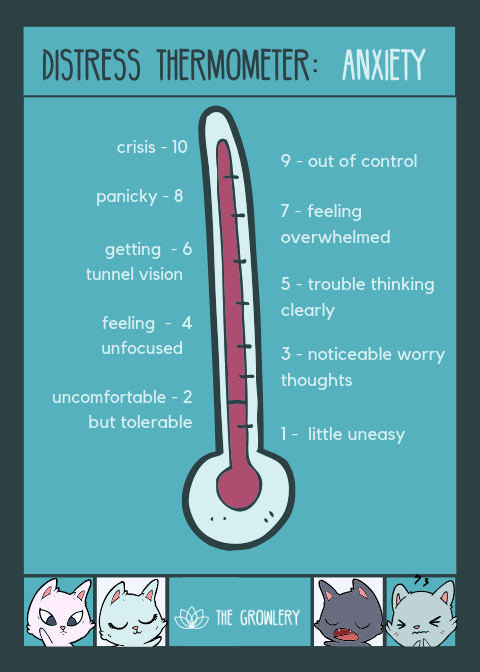How Anxious Am I? Labeling Your Levels of Anxiety
Being unable to describe how you feel is confusing and frustrating. You’re trying to tell your partner how you felt when they didn’t respond to your texts last night and you can’t seem to find the right words. Your therapist is asking you to share what was happening for you emotionally during a triggering event, and you can’t come up with anything other than…”anxious?”
Using a tool like this distress thermometer (sometimes called a Subjective Units of Distress Scale) for different emotions can be an extremely helpful tool in building your emotional vocabulary, self-awareness, and understanding. You can use this example anxiety distress thermometer or build your own using the following steps:
Pick an emotion or type of distress. Your words for describing anxiety, sadness, anger, loneliness, or shame will be different and you’ll want to have a separate scale for each one.
Start with the levels you can most easily identify. Sometimes this means starting with the highest points on the scale, other times the lowest.
Describe what happens in your body, what happens to your thoughts, what kind of urges/behaviors come up for you, and any emotion words that resonate. Use an emotions dictionary or emotions list if that’s helpful.
Go back and fill in any missing numbers, using recent situations from your life to identify examples where you felt that emotion and how distressed you were.
You can use your distress thermometer to create specific coping plans for different types and levels of distress. It can also be used to help you identify how you’re feeling in the moment and express this to others, or use it to guide your decision-making.
Happy thermometer building!

